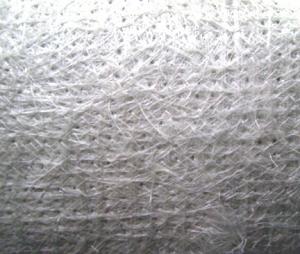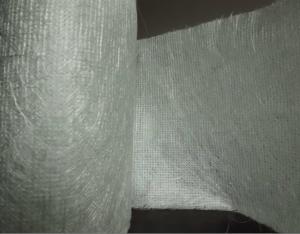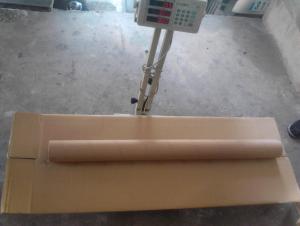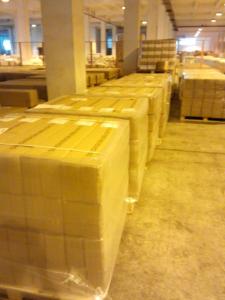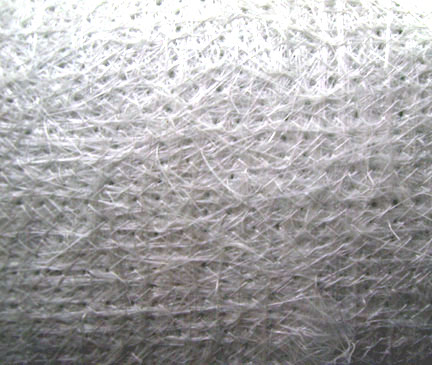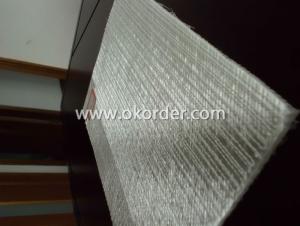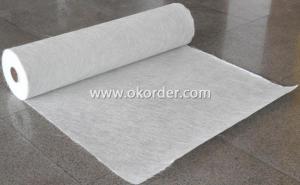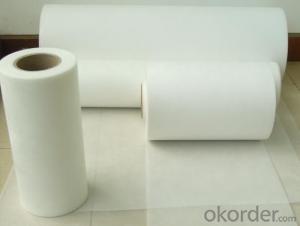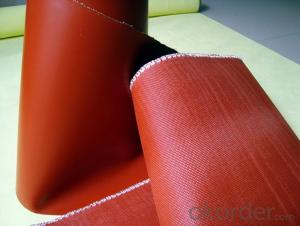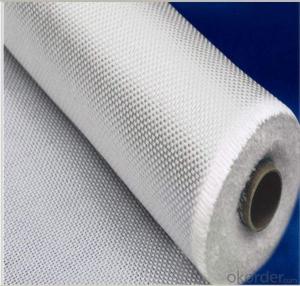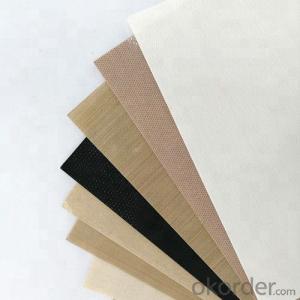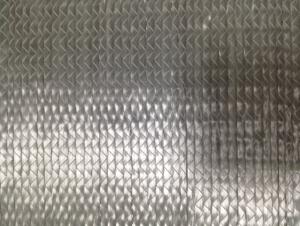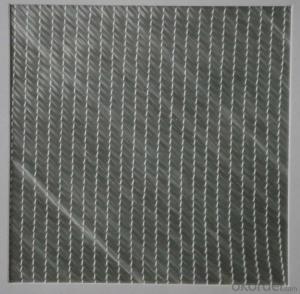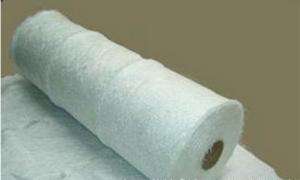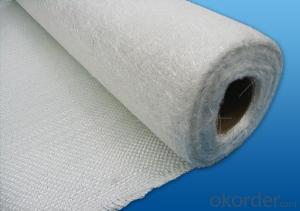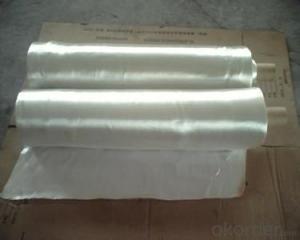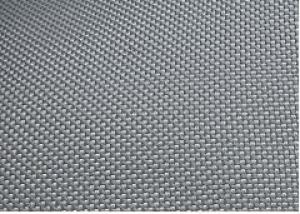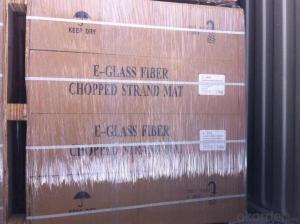e-Glass Stitch Combo Mat - EMK Fiberglass Fabrics
- Loading Port:
- China Main Port
- Payment Terms:
- TT or LC
- Min Order Qty:
- 1000 kg
- Supply Capability:
- -
OKorder Service Pledge
OKorder Financial Service
You Might Also Like
DESCRIPTION
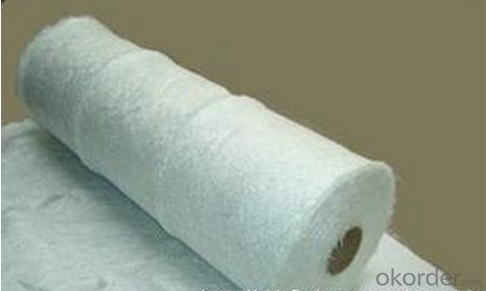
E-glass stitched combo mat consists of two or more layers of fiber glass rovings which arestitch-bonded. one layer of rovings and differene layers of rovings can beoriented differently and have different linear density. the rovingspecification, number of roving layers, mat width and roll diameter can becustomized as per requirement.
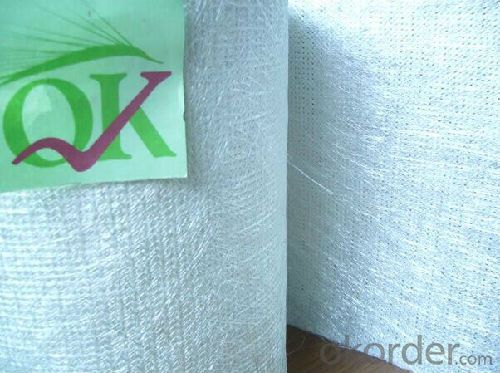
SPECIFICATIONS
| Product No | Overall Density | Woven Roving Density | Chop Density | Polyester Yarn Density |
| BH-ESM1808 | 896.14 | 612 | 274.64 | 9.5 |
| BH-ESM1810 | 926.65 | 612 | 305.15 | 9.5 |
| BH-ESM1815 | 1080.44 | 612 | 457.73 | 10.71 |
| BH-ESM2408 | 1132.35 | 847 | 274.64 | 10.71 |
| BH-ESM2410 | 1162.86 | 847 | 305.15 | 10.71 |
| BH-ESM2415 | 1315.44 | 847 | 457.73 | 10.71 |
APPLICATION:
Emulsion Chopped Strand Mat is mainly applied to unsaturated polyester ,viny ester and epoxyresins. The product is most widely used in hand lay-up process and also can be used in filament winding. compression molding and continuous laminating processes. The typical end products including various panels, boats,bath equipment automotive parts and cooling towers
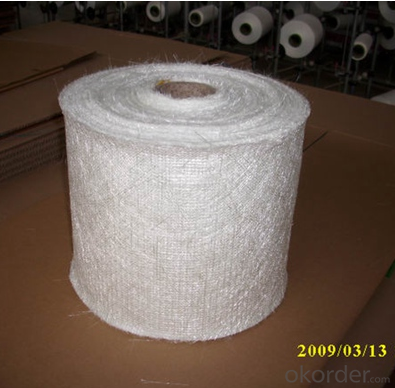
PACKAGE:
fiberglassstitched mat is wound onto paper tube and then wrapped up with plasticfilm, which can be packed in a cardboad box or kraft paper.the rolls are to behorizontallyplaced. rolls can be loaded into container diretly or on pallets.
FAQ:
1.What is the delivery time ?
15days after receiving the deposit
2.Are you a trading company or factory.
We are factory,and we have more than 10 years of experience.
- Q: Can fiberglass fabric be used for insulation in telecommunications infrastructure?
- Fiberglass fabric is indeed a suitable option for insulation in telecommunications infrastructure. Its remarkable thermal insulation properties make it an optimal choice for insulating various components within the telecommunications industry. By effectively preventing heat loss or gain, it ensures that equipment functions within the desired temperature range. Moreover, fiberglass fabric's lightweight nature, flexibility, and easy installation process make it a convenient solution for insulating cables, antennas, and other infrastructure components. Additionally, its resistance to moisture, chemicals, and fire offers an extra layer of protection to the insulation system. All in all, fiberglass fabric is extensively utilized and considered an appropriate material for insulation in telecommunications infrastructure.
- Q: What is the melting point of fiberglass fabric?
- The melting point of fiberglass fabric varies depending on the specific type and composition of the fabric. Generally, fiberglass fabric has a melting point ranging from 1000 to 1400 degrees Celsius (1832 to 2552 degrees Fahrenheit). However, it is important to note that fiberglass fabric typically starts to degrade and lose its structural integrity at temperatures well below its melting point. Therefore, it is recommended to avoid exposing fiberglass fabric to high temperatures to prevent any potential damage or safety hazards.
- Q: How is fiberglass fabric used in the production of insulation papers?
- Fiberglass fabric is commonly used in the production of insulation papers as it provides excellent thermal resistance and insulation properties. It is typically woven into a thin and flexible sheet, which is then combined with other materials to create insulation papers. The fiberglass fabric helps to trap air pockets, reducing heat transfer and enhancing the overall insulation effectiveness of the papers. Additionally, it adds strength and durability to the final product, making it suitable for various insulation applications.
- Q: How is fiberglass fabric coated?
- Different methods are used to coat fiberglass fabric, depending on its intended use and specific requirements. One commonly used method is resin coating, where a liquid resin is applied to the fabric. The resin can be either epoxy or polyester based and is usually mixed with a catalyst to start the curing process. The fabric is then soaked with the resin and excess resin is removed to ensure an even coat. Another method is silicone coating, where a layer of liquid silicone is applied to the fabric. Silicone coatings provide excellent heat resistance and flexibility, making them suitable for insulation or protective covers. Occasionally, fiberglass fabric may be coated with other materials like polyurethane or PTFE (polytetrafluoroethylene), commonly known as Teflon. Polyurethane coatings offer improved abrasion resistance and flexibility, while PTFE coatings provide excellent non-stick properties and high temperature resistance. The coating process can be done using different techniques, including dip coating, spray coating, or roller coating. Dip coating involves immersing the fabric into a tank filled with the coating material, while spray coating evenly distributes the coating onto the fabric surface using a spray gun. Roller coating applies the coating in a controlled manner by passing the fabric through a set of rollers. Overall, the coating process is essential for enhancing the performance and durability of fiberglass fabric, allowing it to be utilized in various industries such as aerospace, automotive, construction, and marine.
- Q: What does 240 grams of fiberglass cloth mean?
- Fiberglass cloth is also commonly called fiberglass geotextile. A geosynthetic material widely used in civil engineering. It is mainly made of glass fiber and staple fiber, needle punched non-woven fabric composite geosynthetics.
- Q: Is fiberglass fabric resistant to staining?
- Fiberglass fabric generally resists stains due to its composition of fine glass fibers woven together to create a durable and robust material. Its non-porous nature prevents liquids and substances from easily penetrating and causing stains. This quality makes fiberglass fabric highly resistant to various types of stains, including those caused by household items like food, beverages, oil, and grease. Additionally, manufacturers often apply a protective coating or finish to enhance its stain-resistant properties. However, it is important to note that while fiberglass fabric resists staining, it is not entirely impervious to all types of stains. Certain harsh substances, such as chemicals or dyes, may still cause discoloration or staining. Therefore, it is essential to promptly clean any spills or stains on fiberglass fabric to maintain its long-term durability and appearance.
- Q: What are the different fiberglass fabric finishes for antistatic properties?
- There are several different fiberglass fabric finishes that can provide antistatic properties. Some common finishes include carbon coating, metalized coating, and conductive polymer coating. These finishes help to dissipate static charges and prevent the buildup of static electricity on the fabric surface.
- Q: What are the different weaves available in fiberglass fabric?
- There are several different weaves available in fiberglass fabric, including plain weave, twill weave, satin weave, and leno weave.
- Q: Can fiberglass fabrics be used for automotive applications?
- Yes, fiberglass fabrics can be used for automotive applications. Fiberglass fabrics are known for their high strength-to-weight ratio, durability, and resistance to heat and chemicals. These properties make them suitable for various automotive applications such as reinforcing body panels, constructing interior components, and creating structural reinforcements. Fiberglass fabrics can be molded and shaped to fit specific automotive parts, providing strength and stability while reducing weight. Additionally, the thermal insulation properties of fiberglass fabrics make them ideal for use in automotive exhaust systems and engine compartments. Overall, fiberglass fabrics offer several benefits in terms of performance, durability, and design flexibility, making them suitable for a wide range of automotive applications.
- Q: Is fiberglass fabric resistant to rot and mildew?
- Yes, fiberglass fabric is highly resistant to rot and mildew. This is because fiberglass is made from a combination of glass fibers and a polymer resin, which makes it highly resistant to moisture and fungal growth. Unlike natural fabrics such as cotton or wool, fiberglass does not provide a suitable environment for mold or mildew to grow. Additionally, fiberglass is non-porous and does not absorb water, further reducing the risk of rot or mildew formation. This makes fiberglass fabric a popular choice for applications where moisture resistance and durability are important, such as in outdoor furniture, boat covers, and automotive interiors.
Send your message to us
e-Glass Stitch Combo Mat - EMK Fiberglass Fabrics
- Loading Port:
- China Main Port
- Payment Terms:
- TT or LC
- Min Order Qty:
- 1000 kg
- Supply Capability:
- -
OKorder Service Pledge
OKorder Financial Service
Similar products
Hot products
Hot Searches
Related keywords
